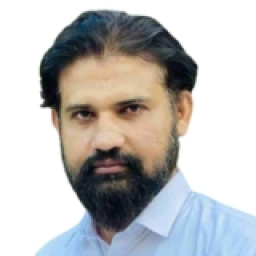

Estimated Reading Time: 17 min
Astonishing the Gods MCQs
1. Why did the protagonist initially resolve to leave his land?
A. To find wealth
B. To become a shepherd
C. To find people who existed
D. To learn languages
2. What two answers did the traveler always give regarding his destination?
A. For his ears and the world’s ears
B. One for himself, one for others
C. One for his mind, one for his heart
D. For visibility and for invisibility
3. What pattern covered the great square where he disembarked?
A. Black and yellow squares
B. Diamond patterns
C. A giant chessboard
D. Simple marble
4. What sensory experience overcame him, making him want to stay?
A. The orange glow
B. Invisible enchantments
C. The motionlessness
D. The tinkling bells
5. What did the first invisible guide say naming things causes?
A. Loss of identity
B. Things to disappear
C. Confusion
D. Greater visibility
6. What sound confirmed the protagonist’s decision to stay on the island?
A. The ship’s final blast
B. The flute choruses
C. A woman’s glorious singing
D. The wind whispering
7. What substance were the houses and facades on the avenue made of?
A. Polished glass
B. Solid gold
C. Mirrors
D. Marble stone
8. What did the guide say the Invisibles were masters of, besides suffering?
A. The art of fighting
B. The art of happiness
C. The art of transcendence
D. The art of building
9. What unique creature did the protagonist see trotting past in a magnificent garden mirror?
A. A lion
B. A green leopard
C. A white unicorn
D. A blue gazelle
10. What advice did the guide give regarding the protagonist’s disorientation by the wonders?
A. To retain his bewilderment
B. To seek understanding
C. To find the meaning
D. To focus on the sword
11. What item of incorruptible gold pointed to the heavens from the green lake mirror?
A. A diamond cup
B. The sword of Justice
C. A divine arrow
D. The sun’s reflection
12. What was the protagonist’s ultimate fear about invisibility?
A. Losing his wealth
B. Gradations and depths
C. Being ignored
D. Being caught by spirits
13. What terrifying sight was the Archangel of Invisibility compared to?
A. A colossal statue
B. A forgotten god of the mountains
C. A raging fire
D. A terrifying king
14. What substance was the fabulous bridge, suspended in the air, composed of?
A. Polished glass
B. Water
C. Mist
D. Solid gold
15. According to the guide, what holds up the bridge?
A. Invisible columns
B. The weight of the world
C. Only the person crossing it
D. The archangel’s power
16. What fate awaited the traveler if he failed to cross the bridge?
A. He would be arrested
B. He would become a statue of his worst self
C. He would disappear immediately
D. He would find peace
17. What final physical form did the bridge take before the protagonist ran onto it?
A. Stone
B. Water
C. Fire
D. Glass
18. When walking the fiery bridge, how did the protagonist cover the greatest distance fastest?
A. By running quickly
B. By flying
C. By walking more slowly
D. By screaming
19. What did the bridge suddenly turn into halfway across, causing the protagonist to drown?
A. Air
B. Water
C. Stone
D. Dreams
20. What vision did he see as he flailed in midair toward the end of the crossing?
A. A storm
B. People rising from the ocean bed to build a new city
C. The guide waiting
D. Demons rushing past
21. What did the new civilization build its palaces and libraries from?
A. Stone, marble, diamond, and gold
B. Glass and light
C. Wood and silk
D. Mist and air
22. What was the most ordinary goal of their new educational system?
A. Achieving great wealth
B. Living the fullest life
C. Winning wars
D. Becoming invisible
23. What did the protagonist realize about the final, magnificent bridge?
A. It was made of air
B. It was the bridge of self-discovery
C. It was made of diamonds
D. It was invisible
24. According to the guide, what keeps things alive?
A. Awareness
B. Mystery
C. Understanding
D. Joy
25. What was inscribed on the elegant stone monoliths in the city square?
A. Names of the gods
B. Universal laws in an unknown language
C. Maps of the city
D. The motto of the quest
26. What did the protagonist realize had shaped the city’s marble facades and statues?
A. Water and stone
B. Music and spirit
C. Gold and diamond
D. Dreams and silence
27. What did the city first appear to be, before he sensed it was water or fire?
A. A city of light
B. A city of stone
C. A city of dreams
D. A city of glass
28. What advice did the world tell the protagonist through its harmonies?
A. To stop looking, to see beyond
B. To stop listening
C. To cross the bridge quickly
D. To keep seeking visibility
29. What was the “house of justice” momentarily transformed into by the city’s changing forms?
A. A mood of green
B. A statue
C. An empty space
D. A sundial
30. What did the guide claim the city’s inhabitants were doing while the city slept?
A. Fighting demons
B. Building dreams
C. Dreaming
D. Relearning laws
31. What was the first law of the Invisibles’ city?
A. That all things must be visible
B. What you think is what becomes real
C. Awareness is the key
D. Silence is a melody
32. Why must every experience be repeated if not properly felt the first time?
A. To increase suffering
B. To teach appreciation
C. To ensure full learning from suffering
D. To aid awareness
33. According to the guide, when you are in time, all time is like what?
A. A river
B. A turning wheel
C. A still painting
D. A restless ocean
34. What quality did the guide tell the protagonist to adopt at the gate of every new reality?
A. Invent reality
B. Be still
C. Be afraid
D. Seek knowledge
35. Where did the guide claim the best and most enduring things are located?
A. In the ordinary achievements
B. In the invisible realm
C. In the city’s gold
D. In the visible triumphs
36. What did the guide warn would happen to beautiful things?
A. They would become monuments
B. They were doomed to become higher
C. They would be forgotten
D. They would be protected
37. What mythological creature surmounted the great gate of the city?
A. A lion
B. A giant dragon
C. A griffin
D. An eagle
38. What did the iron scroll on the dragon’s paw have embossed figures of?
A. Gods and demons
B. Deep-water creatures with seven eyes
C. Famous heroes
D. Lions, eagles, and sphinxes
39. What essential step was needed before entering the city via the great gate?
A. Receiving a welcome
B. Deciphering the motto words
C. Finding the key
D. Paying a toll
40. What happened to the protagonist when he trembled uncontrollably before the gate?
A. He ran away
B. The gate vanished
C. The words became clearer
D. The axe fell
41. Who became the protagonist’s new guide after the gate vanished?
A. The archangel
B. A little boy’s voice
C. A tall lean youth
D. The invisible woman
42. What was the city’s true inspiration, despite being made of stone and fire?
A. Water
B. Air
C. Dreams
D. Music
43. What was the purpose of the city’s libraries?
A. Borrowing ancient texts
B. Recording thoughts, dreams, and prophecies
C. Holding city money
D. Teaching history
44. What was the most important subject taught in the universities?
A. Mathematics
B. Love
C. History
D. Science
45. What type of thoughts were deposited in banks?
A. Thoughts of wealth and serenity
B. Thoughts of despair
C. Thoughts of sickness
D. Thoughts of failure
46. What was the typical form of treatment preferred in hospitals?
A. Gentle music and contemplation
B. Surgery
C. Laughter, poetry, and sculpting
D. Strong medication
47. What did the woman on the floating litter say she desired?
A. To find true love
B. Illusion, ugliness, and suffering
C. To be taken to the palace
D. To be left alone
48. What did the dwarf-like figure warn would happen if the protagonist stayed too long on the island?
A. He would become rich
B. He would go completely mad
C. He would become a hero
D. He would be forgotten
49. What did the protagonist feel was his true destination?
A. The moment he started his quest
B. The mysterious square
C. The island of dreams
D. The palace of light
50. What new quality did the mysterious woman’s curse bestow upon the protagonist?
A. Eternal wealth
B. Loss of invisibility
C. Having to love without illusion
D. Endless yearning
Brief Overview
Astonishing the Gods is a novel by Ben Okri, first published in 1995. The novel is a philosophical fable that follows the journey of an unnamed young man who seeks the secret of invisibility and visibility. The narrative uses highly symbolic language and focuses on themes of art, perception, and spiritual awakening.
The young man is born invisible and grows up in a community of people who are also invisible. He is dissatisfied with this state and resolves to find a trustworthy source of visibility and power. His quest leads him through years of travel, during which he learns about various forms of human and spiritual expression.
He arrives at a mysterious city that seems to exist on the border between reality and the spirit world. This city is filled with contradictions and strange beauty, forcing him to question his understanding of existence.
His main trial is a quest to cross a bridge made of mist that changes its form. He learns that to cross it, he must rely entirely on his own commitment and imagination. The masters of the city define the bridge’s mystery as “Creativity and Grace.”
The young man eventually meets the Invisible Masters. He must correctly answer three core riddles, proving that he has fully understood the nature of suffering and wisdom.
Upon succeeding, he looks into a mirror and finds his own reflection is gone. He has achieved accurate visibility by becoming one of the blessed Invisibles, reaching the highest spiritual state.


